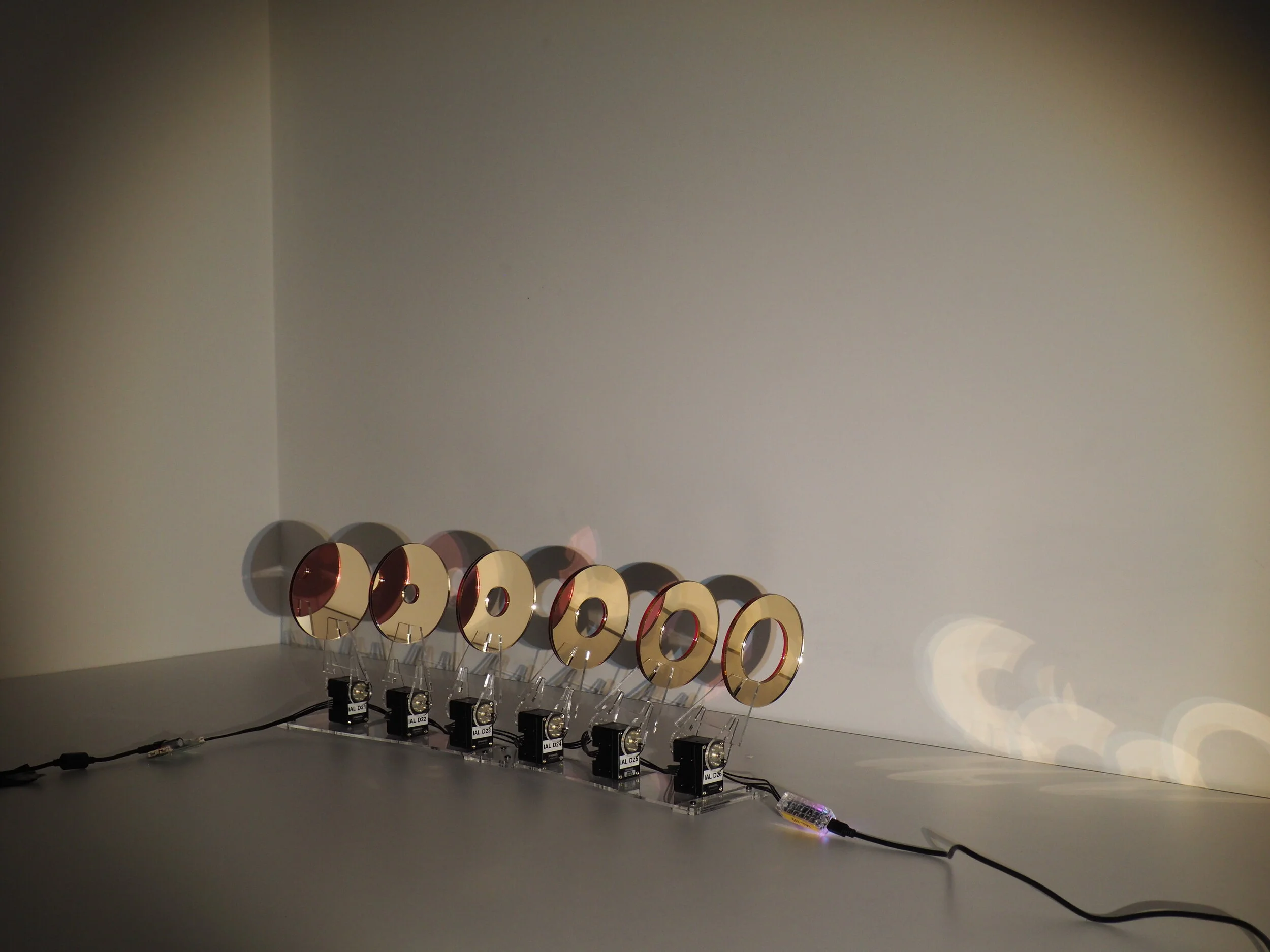
Duochrome

collaboration with Quy Phung Ta, Irem Budgayci
2018

Feature — Duochrome Project Prototype
For a ‘Kinetic Choreographies’ robotics workshop, we were interested in the composition of exquisite kinetic choreography of sine motion. We explored the expressiveness of sine-based kinetic motion and applied choreographic thinking into our design. The goal for the workshop was to study and design motion patterns, review them for expressive intent, generate them through code, then visualize them with simulation and apply them to the design of a physical construct in the form of a small kinetic sculptural prototype.

Our development of the sculptural design was to explore the phenomenon of chromatic aberration of visual perception, demonstrated by the duochrome test. The design includes a composition of a series of concentric acrylic panels lasercut in circular shape, with two different coloured reflective layers faced back-to-back.

The choreography of the sine motion obscures and clarifies the pink back side of each panel as it reflects on the surface of the gold front side of the next panel, achieving a visually perceptive illusion of singular versus dual colour fanning as reflective surfaces sway in motion and in and out of focus from any given angle. The effect represents the expression of chromatic aberration turning into the phenomenon of achromatism, monochrome to duochrome and vice versa.

The acrylic constructed pieces were attached to a series of six Dynamixel servo motors, controlled by a Processing Java-based code scripted by the team. An array list of the motor serial numbers was scripted in the code to simulate the sine motion through calibrated control of each motor in their positional order.




